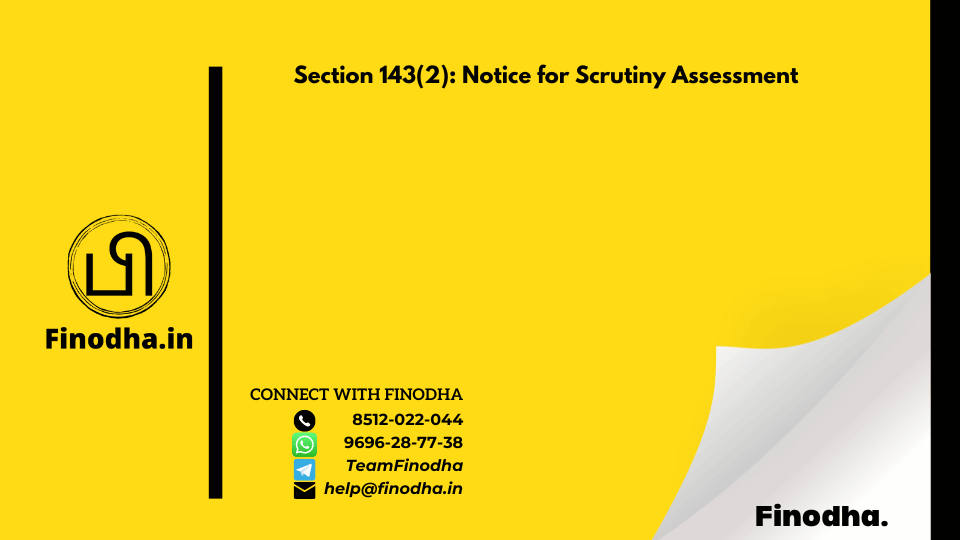Important Keyword: Income Tax, IT Notice, Section 143(2).
Table of Contents
Section 143(2): Notice for Scrutiny Assessment
After a taxpayer files their income tax return, the Income Tax Department initiates the review and assessment process. This involves carefully examining the returns to ensure accuracy and authenticity. If there are any discrepancies or additional information is required, the department can issue various notices such as Notice under section 143(1)(a) or Notice under section 142(1), among others.
Failure to respond to these notices or to provide the requested information may lead to further assessment procedures. One such procedure is known as scrutiny assessment, which is initiated when the department issues a notice to scrutinize the return under section of the Income Tax Act. This allows the department to conduct a more detailed examination of the taxpayer’s income and deductions to ensure compliance with tax laws.
Why Notice under section 143(2) is issued?
Under Section 143(2) of the Income Tax Act, the department issues formal notices to conduct scrutiny assessments, typically under Section 143(3).
Scrutiny assessment, or detailed assessment under Section 143(3), involves verifying the accuracy and genuineness of various claims and deductions made in Income Tax Returns. The aim is to ensure that the taxpayer has accurately reported their income and deductions and paid the corresponding taxes.
There are three types of notices under Section 143(2):
- Limited Scrutiny: Cases are selected based on specific parameters, often through Computer-Assisted Scrutiny Selection (CASS). This scrutiny focuses on particular areas mentioned in the notice, such as discrepancies in tax credits or property sales.
- Complete Scrutiny: A thorough review is conducted of the filed ITR and supporting documents. While cases are still identified through CASS, this scrutiny is not limited to specific areas. However, the assessing officer can only inspect documents relevant to the specific assessment year.
- Manual Scrutiny: Cases for manual scrutiny are selected based on criteria defined by the Central Board of Direct Taxes (CBDT). These criteria may change annually and aim to ensure comprehensive examination of relevant cases.
Sample Notice u/s 143(2)

Under Section 143(2) of the Income Tax Act, the notice must be issued within 3 months from the end of the financial year in which the return of income is filed. For example, if a taxpayer files their return for the financial year 2022-23 on July 25, 2023, the AO can issue a notice under Section 143(2) until June 30, 2024, which is three months from the end of FY 2023-24.
Upon receiving the notice, the taxpayer must respond by submitting the necessary documents online or appearing before the AO to provide arguments and evidence.
The AO will then proceed to issue an assessment order after examining the submitted documents. The time period to issue a final assessment order under Section 143(3) is 9 months from the end of the relevant Assessment Year.
Non-compliance with the notice can lead to penalties under Section 272A, amounting to ₹10,000 for each failure. Additionally, the AO may conduct a best judgment assessment under Section 144 and, if the taxpayer is found guilty, imprisonment may be imposed.
Read More: Section 148: Income Escaping Assessment
Web Stories: Section 148: Income Escaping Assessment
Official Income Tax Return filing website: https://incometaxindia.gov.in/





0 Comments